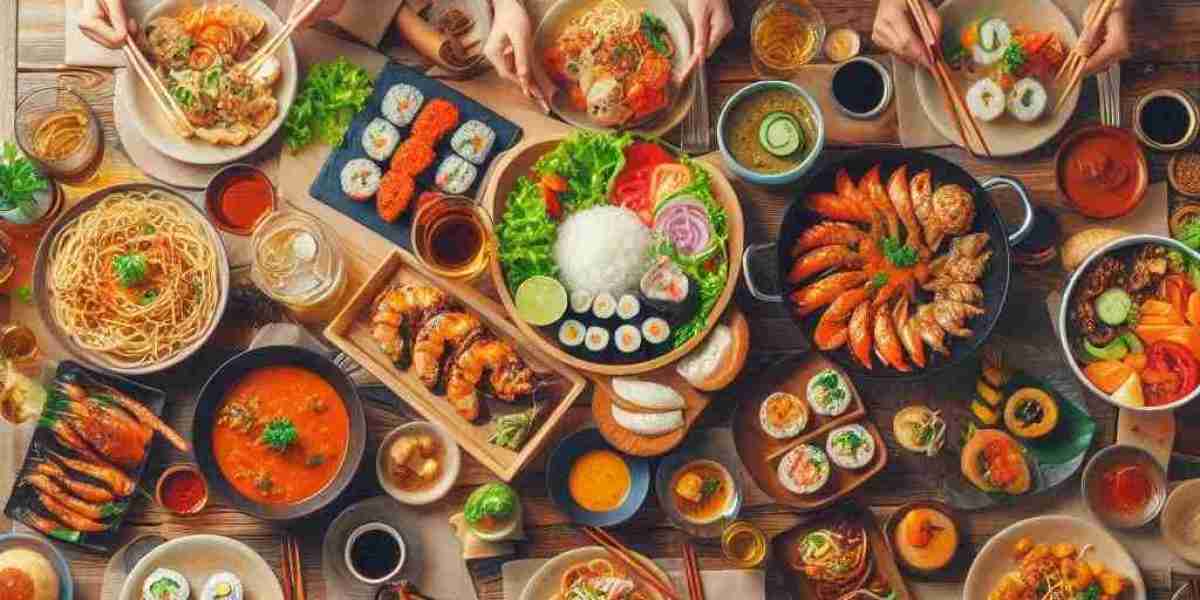Food is more than just sustenance; it’s a window into a culture, a way to connect with people, and one of the greatest pleasures in life. For travelers and food lovers alike, the world offers an incredible variety of flavors, traditions, and dining experiences. Some countries stand out as culinary paradises, where the love of food permeates every aspect of life. Let’s embark on a mouthwatering journey to explore the best countries for food.
1. Italy: The Heart of Comfort Food
When it comes to food, Italy often tops the list. The country is a mecca for food lovers, offering a rich and diverse culinary tradition that varies from region to region. From the comforting pastas of Tuscany to the fresh seafood of the Amalfi Coast, Italian cuisine is a celebration of simplicity and quality ingredients.
Must-Try Dishes: In Italy, every region has its specialty, but no trip would be complete without tasting Neapolitan pizza in Naples, pasta alla carbonara in Rome, or a Florentine bistecca (steak) in Tuscany. Don’t forget to indulge in gelato, tiramisu, and a robust espresso.
Food Culture: Italians eat with passion, and meals are a time to gather with family and friends. The concept of “slow food” originated here, emphasizing the importance of taking time to enjoy your meal, appreciate the ingredients, and savor every bite.
2. Japan: The Art of Precision and Purity
Japan offers a culinary experience like no other, combining centuries-old traditions with meticulous attention to detail. Japanese cuisine is characterized by its emphasis on seasonality, presentation, and the pursuit of umami—the fifth taste.
Must-Try Dishes: Sushi and sashimi are the stars of Japanese cuisine, best enjoyed at a traditional sushi counter. Ramen is another must-try, with regional variations across the country. Don’t miss kaiseki (a multi-course meal) in Kyoto, and be sure to sample okonomiyaki in Osaka and tempura in Tokyo.
Food Culture: Japanese dining is as much about the experience as it is about the food. Whether it’s the precise preparation of sushi or the communal enjoyment of a hot pot, Japanese cuisine reflects a deep respect for ingredients, seasons, and tradition.
3. Thailand: A Symphony of Flavors
Thailand is a food lover’s paradise, known for its vibrant street food scene and bold flavors that balance sweet, sour, salty, and spicy. Thai cuisine is a harmonious blend of fresh herbs, spices, and other ingredients, creating dishes that are both fragrant and flavorful.
Must-Try Dishes: Thai food is incredibly diverse, but some must-try dishes include pad thai (stir-fried noodles), tom yum goong (spicy shrimp soup), som tam (green papaya salad), and mango sticky rice. Street food stalls offer some of the best and most authentic flavors.
Food Culture: Eating in Thailand is a social activity, often done family-style with multiple dishes shared among friends and family. The bustling markets and street food vendors are integral to Thai life, offering everything from quick snacks to elaborate meals.
4. France: The Pinnacle of Fine Dining
France is synonymous with culinary excellence. The country’s food culture is steeped in tradition, with a focus on technique, presentation, and the enjoyment of dining as an art form. French cuisine has influenced chefs around the world and continues to set the standard for fine dining.
Must-Try Dishes: French cuisine is incredibly varied, but essential dishes include coq au vin (chicken braised in wine), bouillabaisse (fish stew), ratatouille (vegetable medley), and crêpes. French pastries like croissants, éclairs, and macarons are also legendary.
Food Culture: In France, dining is an experience to be savored. Meals are often leisurely affairs, with multiple courses and plenty of time to enjoy each dish. The French take great pride in their food, whether it’s a simple baguette or a multi-course gourmet meal.
5. Mexico: A Fiesta of Flavors
Mexican cuisine is a vibrant and diverse tapestry of flavors, reflecting the country’s rich cultural heritage. It’s a cuisine that celebrates bold spices, fresh ingredients, and the joy of eating. From street tacos to elaborate moles, Mexican food is as varied as the country’s landscapes.
Must-Try Dishes: No visit to Mexico is complete without trying tacos al pastor (spit-roasted pork tacos), mole poblano (rich, chocolate-tinged sauce), tamales, and chiles en nogada (stuffed chiles with walnut sauce). Don’t miss out on authentic guacamole and a refreshing margarita.
Food Culture: In Mexico, food is deeply tied to traditions and celebrations. Meals are often communal, with an emphasis on sharing and enjoying food together. Street food is a big part of the culture, offering an array of flavors and textures at every corner.
6. India: A Spice-Lover’s Paradise
India is a land of vibrant flavors and diverse culinary traditions. Indian cuisine is known for its bold use of spices, regional diversity, and the importance of vegetarian dishes. Each region offers a unique take on Indian food, making it a country where you could spend a lifetime exploring its culinary landscape.
Must-Try Dishes: India’s culinary diversity is vast, but highlights include butter chicken in the north, masala dosa in the south, biryani in Hyderabad, and chaat (savory snacks) in Mumbai. Don’t miss out on trying samosas, naan, and the vast array of Indian sweets like gulab jamun and jalebi.
Food Culture: In India, food is a communal experience, often served family-style. Meals are typically eaten with hands, using bread or rice to scoop up curries and stews. The country’s vibrant street food scene is also a must-experience, offering everything from spicy chaats to sweet treats.
7. Spain: A Celebration of Regional Delights
Spain’s culinary culture is as diverse as its landscapes, with each region offering its own specialties. Spanish cuisine is known for its bold flavors, use of fresh ingredients, and the tradition of tapas—small dishes meant for sharing. Eating in Spain is a social experience, often accompanied by good wine and great conversation.
Must-Try Dishes: Paella is Spain’s most famous dish, particularly in Valencia, where it originated. Other must-tries include jamón ibérico (cured ham), tortilla española (Spanish omelette), gazpacho (cold tomato soup), and the array of tapas like patatas bravas and croquetas.
Food Culture: In Spain, meals are a time to gather and enjoy life. Lunch is often the largest meal of the day, followed by a siesta. Dinner is typically a lighter affair, eaten late in the evening. The tradition of tapas encourages sharing, conversation, and a leisurely dining experience.
Conclusion: A World of Flavors Awaits
The world is full of incredible food experiences, and the best countries for food lovers offer more than just delicious dishes—they offer a deeper connection to culture, history, and community. Whether you’re indulging in the comfort foods of Italy, the precision of Japanese cuisine, or the bold flavors of Mexico, every meal is an opportunity to explore, learn, and savor the richness of a country’s culinary heritage.
So pack your bags, bring your appetite, and get ready to embark on a global gastronomic adventure. There’s a world of flavors out there waiting to be discovered!









